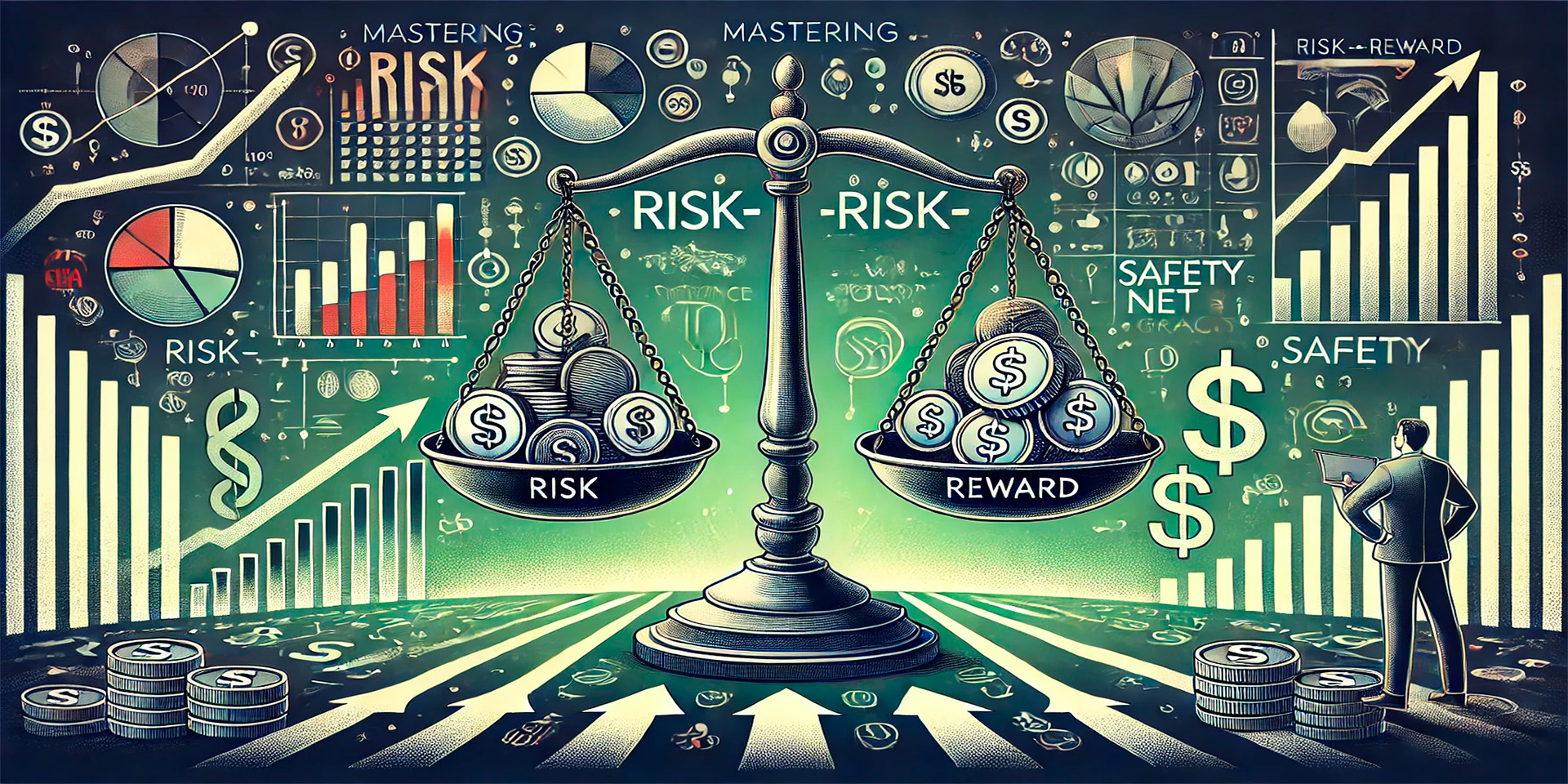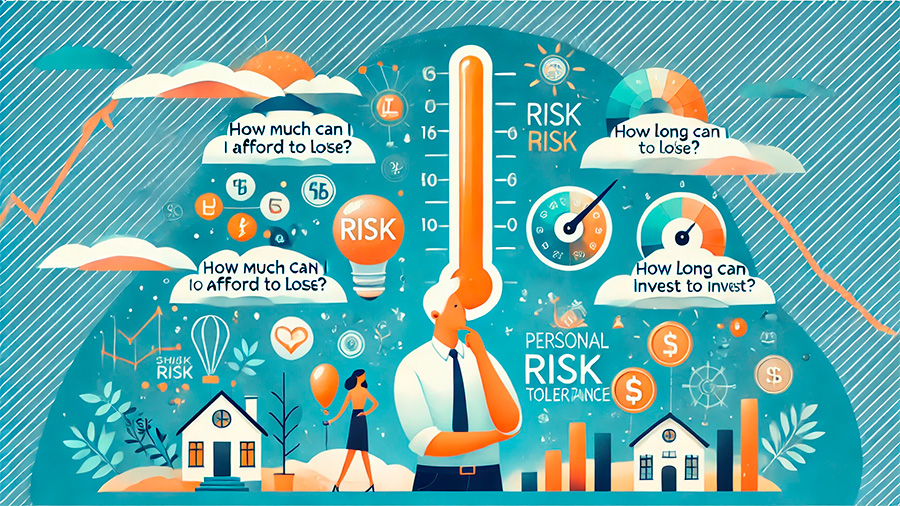
Investing is all about balancing risk and reward. While the potential for higher returns is appealing, it often comes with increased risk. Understanding how to assess whether the potential reward justifies the risk is crucial to making informed investment decisions. By carefully evaluating various factors, such as market conditions, company performance, and your own financial goals, you can better determine if an investment is worth pursuing.
This article explores how to assess investment opportunities, focusing on the balance between risk and reward, and providing actionable steps to make smarter financial decisions.
Understanding the Risk-Reward Tradeoff
At the core of any investment decision is the risk-reward tradeoff. In general, higher-risk investments, like stocks or cryptocurrencies, offer the potential for higher returns but come with greater volatility and the possibility of losing money. Lower-risk investments, such as government bonds or savings accounts, provide more stability but typically offer lower returns.
The challenge for investors is to find the right balance between risk and reward that aligns with their financial goals and risk tolerance. This balance varies from person to person, depending on factors such as age, investment horizon, and income needs.

Step 1: Assess Your Risk Tolerance
Before you can evaluate specific investment opportunities, it’s essential to understand your own risk tolerance. Your risk tolerance refers to how much risk you’re willing to take on in pursuit of potential returns. Some investors are comfortable with higher levels of risk in exchange for the possibility of greater profits, while others prefer safer, more predictable investments.
To determine your risk tolerance, ask yourself the following questions:
- How would I feel if my investment lost 10%, 20%, or more in a short period of time?
- How long can I keep my money invested before needing to access it?
- Am I investing for short-term goals (e.g., buying a house) or long-term goals (e.g., retirement)?
- How much financial cushion do I have if an investment doesn’t perform well?
Understanding your risk tolerance helps guide your investment choices, ensuring that you don’t take on more risk than you’re comfortable with.
Long-Term vs. Short-Term Investing
Your investment time horizon plays a critical role in determining the right risk-reward balance. If you’re investing for long-term goals like retirement, you may be able to take on more risk, knowing that you have time to recover from market downturns. On the other hand, if you’re investing for a short-term goal, such as a down payment on a house, you may want to focus on lower-risk, more stable investments to preserve your capital.
Long-term investors may be more inclined to invest in growth-oriented assets, such as stocks or real estate, which offer the potential for significant returns over time. Short-term investors, however, may prefer bonds or cash equivalents, which provide stability and liquidity.
Step 2: Analyze the Investment’s Risk Factors
Once you understand your risk tolerance, the next step is to analyze the specific risk factors associated with an investment. Different types of investments come with different types of risk, so it’s important to assess each opportunity based on its unique characteristics.
Market risk: This is the risk that the value of your investment will fluctuate due to changes in the overall market. Stocks, for example, are highly influenced by market trends, economic conditions, and investor sentiment, which can cause prices to rise or fall unexpectedly.
Credit risk: For investments like bonds, credit risk refers to the possibility that the issuer may default on its payments. Bonds issued by financially stable companies or governments carry less credit risk, while high-yield or “junk” bonds offer higher returns but come with increased credit risk.
Liquidity risk: Liquidity risk refers to how easily you can buy or sell an investment without significantly impacting its price. Some assets, such as real estate or private equity, are less liquid, meaning they may take longer to sell or may need to be sold at a discount if the market is unfavorable.
Interest rate risk: This risk applies to fixed-income investments, like bonds, where changes in interest rates can impact the value of the asset. When interest rates rise, bond prices tend to fall, and vice versa.
Understanding these risk factors helps you determine the potential downsides of an investment and decide whether the potential returns justify the risks involved.
Assessing Volatility
Volatility refers to how much the price of an investment fluctuates over time. Highly volatile assets, like certain stocks or cryptocurrencies, can see significant price swings in short periods, which can lead to both large gains and large losses. While volatility offers opportunities for high returns, it also increases the risk of losing money, especially for investors with a shorter time horizon.
To assess volatility, investors often look at the asset’s historical price movements. Assets with a history of stable price movements may offer lower returns but come with less risk, while more volatile assets may offer higher returns at the cost of greater uncertainty.

Step 3: Evaluate the Potential Reward
Once you’ve assessed the risks, it’s time to evaluate the potential reward of the investment. This involves estimating how much you can expect to earn from the investment and whether the returns align with your financial goals.
For example, stocks offer the potential for both capital appreciation and dividends, while bonds provide regular interest payments. Real estate can generate rental income and appreciate in value over time. Each type of investment offers a different reward structure, and it’s important to match these rewards with your investment objectives.
Historical Performance and Future Potential
While past performance is not a guarantee of future results, looking at an investment’s historical performance can provide valuable insights. Has the investment historically delivered strong returns? Is there a pattern of consistent growth or periods of decline? Understanding an investment’s performance history can help you make informed decisions about its future potential.
In addition to looking at historical data, consider the broader market trends and economic conditions that may affect the investment. For example, emerging technologies or industries may offer substantial growth opportunities, while mature industries may offer more stable but lower returns.
Step 4: Diversify to Manage Risk
One of the most effective ways to manage risk while pursuing higher returns is through diversification. Diversifying your portfolio means spreading your investments across different asset classes, industries, and geographic regions to reduce your exposure to any single risk. By holding a mix of stocks, bonds, real estate, and other assets, you can balance the risk and reward of your overall portfolio.
For example, if one sector of the economy experiences a downturn, other investments in your portfolio may perform well, helping to offset the losses. Diversification is a key strategy for mitigating risk and ensuring that your investment portfolio remains resilient in the face of market volatility.
Conclusion
Balancing risk and reward is a fundamental part of investing. By assessing your own risk tolerance, analyzing the risk factors of individual investments, and evaluating the potential rewards, you can make more informed decisions about where to allocate your money. Diversification further helps manage risk, ensuring that your portfolio remains aligned with your financial goals, even in uncertain market conditions.





